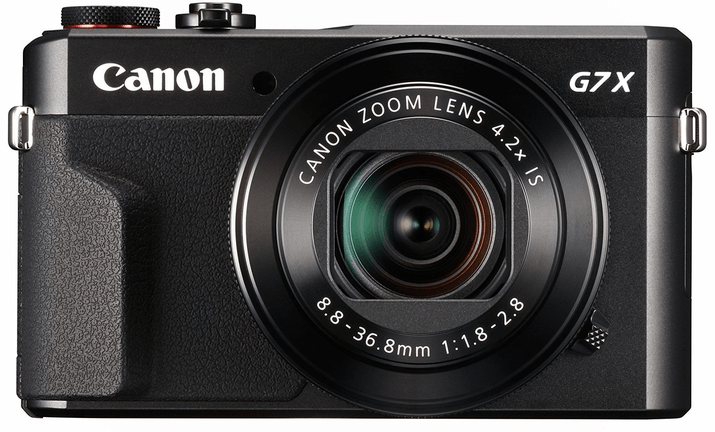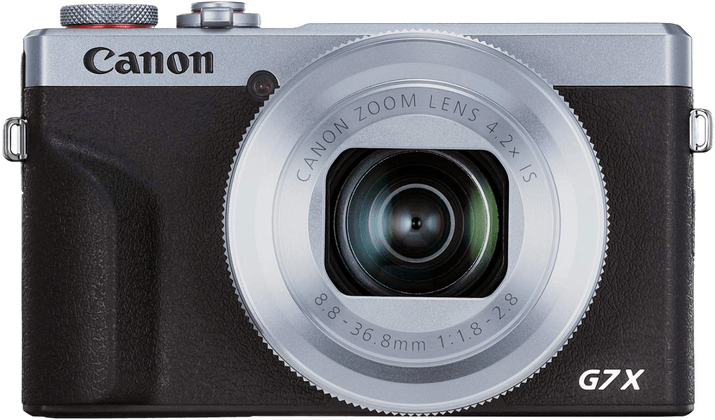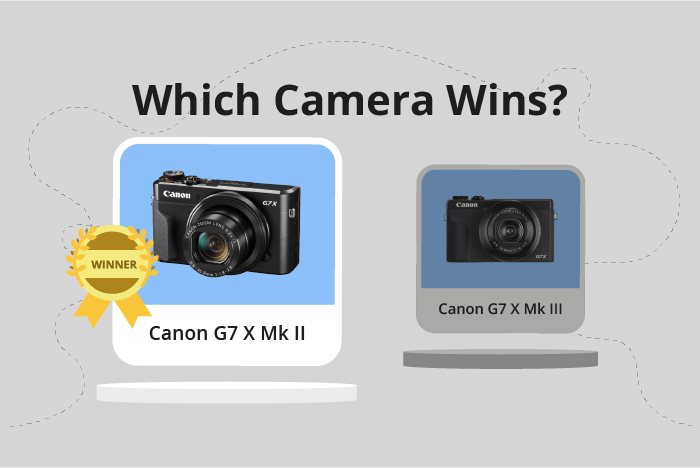Canon PowerShot G7 X Mark II vs PowerShot G7 X Mark III Comparison
Canon PowerShot G7 X Mark II

Canon PowerShot G7 X Mark III

The Canon PowerShot G7 X Mark II and the Canon PowerShot G7 X Mark III both scored 59/100 in our evaluation. As compact cameras, they share several common features, including a similar size and weight. The Mark II measures 106 x 61 x 42mm and weighs 319g, while the Mark III is slightly smaller at 105 x 61 x 41mm and lighter by 15g, weighing 304g.
The Mark III has the advantage of being a more recent release, introduced in 2019, three years after the Mark II’s 2016 launch. This newer model comes at a higher price, $749 compared to the Mark II’s $699. Despite the similar scores, the Mark III’s updated features may justify the extra cost for some users.
On the other hand, the Mark II still holds up as a reliable option, especially for those looking to save some money. With a lower launch price and comparable performance, it remains a solid choice in the compact camera market. Both cameras offer strong capabilities for their users, so the decision comes down to personal preferences and budget constraints.
Canon PowerShot G7 X Mark II vs PowerShot G7 X Mark III Overview and Optics
The Canon PowerShot G7 X Mark II emerges as the winner in optics with a score of 58/100, just one point ahead of the Canon PowerShot G7 X Mark III, which scored 57/100. Both cameras share several common specifications, such as 20-megapixel resolution, CMOS sensor type, 1″ sensor size, and a fixed lens mount.
The G7 X Mark II has a higher DXOMARK sensor score of 79 compared to the G7 X Mark III’s score of 58. This difference indicates better image quality and low-light performance in the Mark II. Additionally, the Mark II is equipped with the Digic 7 processor, which provides fast and efficient performance.
On the other hand, the G7 X Mark III has a significantly higher shooting speed of 30 compared to the Mark II’s shooting speed of 8. This allows the Mark III to capture fast-moving subjects with ease. Furthermore, the G7 X Mark III offers image stabilization, a feature absent in the Mark II. This helps reduce camera shake and improves image sharpness in various shooting conditions.
To sum up, the Canon PowerShot G7 X Mark II has a slight edge in optics due to its higher DXOMARK sensor score, providing better image quality and low-light performance. However, the G7 X Mark III offers faster shooting speed and image stabilization, making it a strong competitor. Ultimately, the choice between these two cameras will depend on the user’s specific needs and preferences.
Canon PowerShot G7 X Mark II vs PowerShot G7 X Mark III Video Performance
The Canon PowerShot G7 X Mark III outperforms the Canon PowerShot G7 X Mark II in video capabilities, with a higher video score of 91 out of 100 compared to the Mark II’s 70. Both cameras share some common specifications, such as built-in time-lapse functionality and the ability to record videos in Full HD.
The G7 X Mark III proves to be superior in video quality due to its 4K video resolution and larger video dimensions of 3840 x 2160, whereas the G7 X Mark II only offers a maximum resolution of 1920 x 1080. Additionally, the Mark III has a higher maximum video frame rate of 120fps, doubling the 60fps offered by the Mark II. This results in smoother and more detailed footage, which is especially useful for capturing fast-paced action or creating slow-motion effects.
The G7 X Mark II does not surpass the G7 X Mark III in any video-related aspect, as they both share the same time-lapse functionality and the Mark III excels in all other video features.
To conclude, the Canon PowerShot G7 X Mark III is the clear winner when it comes to video capabilities, boasting a higher video score, 4K resolution, larger video dimensions, and a higher maximum frame rate. The Canon PowerShot G7 X Mark II, while sharing some features with the Mark III, does not offer any advantage in the video department and falls behind in comparison.
Canon PowerShot G7 X Mark II vs PowerShot G7 X Mark III Features and Benefits
The Canon PowerShot G7 X Mark II and Canon PowerShot G7 X Mark III tie in terms of features, with both cameras scoring 70 out of 100. They share many similar specifications, making it difficult to determine a clear winner.
Both cameras have a 3-inch screen size and a screen resolution of 1,040,000 dots. Additionally, both offer a touchscreen and flip screen, making them user-friendly and versatile for different shooting situations. Neither camera has GPS, but they do come equipped with WIFI and Bluetooth capabilities, allowing for easy sharing and connectivity.
Despite their similarities, there are aspects where one camera excels over the other. The Canon PowerShot G7 X Mark II has a longer battery life, allowing for more shots to be taken before needing to recharge. This is beneficial for photographers who value extended shooting time.
On the other hand, the Canon PowerShot G7 X Mark III offers a faster continuous shooting speed, making it a better choice for capturing fast-moving subjects or action shots. This is advantageous for those who prioritize speed and capturing the perfect moment.
In comparing the Canon PowerShot G7 X Mark II and Canon PowerShot G7 X Mark III, it is evident that both cameras have their strengths. The Mark II offers a longer battery life, while the Mark III boasts a faster continuous shooting speed. However, with their shared specifications and equal feature scores, the choice between these two cameras ultimately depends on the preferences and priorities of the individual photographer.
Canon PowerShot G7 X Mark II vs PowerShot G7 X Mark III Storage and Battery
The Canon PowerShot G7 X Mark II outperforms the Canon PowerShot G7 X Mark III in storage and battery, scoring 29/100 compared to the Mark III’s 27/100. Both cameras share similarities in their storage specifications, with one memory card slot each and compatibility with SD, SDHC, and SDXC (UHS-I) cards. They also use the same NB-13L battery type and offer USB charging capabilities.
The G7 X Mark II has a longer battery life, providing 265 shots per charge, while the G7 X Mark III only delivers 235 shots. This advantage makes the Mark II more suitable for extended shooting sessions without the need for frequent battery changes or recharging.
However, the G7 X Mark III does not surpass the G7 X Mark II in any storage or battery-related aspect. Both cameras share the same storage capabilities, and the Mark II has a superior battery life.
Considering these factors, the Canon PowerShot G7 X Mark II is the better choice for photographers who prioritize longer battery life and efficient storage management. Meanwhile, the Canon PowerShot G7 X Mark III remains a viable option for those who value other features and can manage with its slightly shorter battery life.
Alternatives to the Canon PowerShot G7 X Mark II and PowerShot G7 X Mark III
Are you still undecided about which camera is right for you? Have a look at these popular comparisons that feature the Canon PowerShot G7 X Mark II or the Canon PowerShot G7 X Mark III:
- Canon PowerShot G7 X Mark III vs Sony Cyber-shot DSC-RX100 VII
- Canon PowerShot G5 X Mark II vs PowerShot G7 X Mark III
- Canon PowerShot G7 X Mark III vs Panasonic Lumix ZS200 (TZ200)
- Canon PowerShot G7 X Mark III vs Ricoh GR IIIx
- Canon PowerShot G7 X Mark III vs Sony ZV-E10
- Canon PowerShot G1 X Mark III vs PowerShot G7 X Mark III

